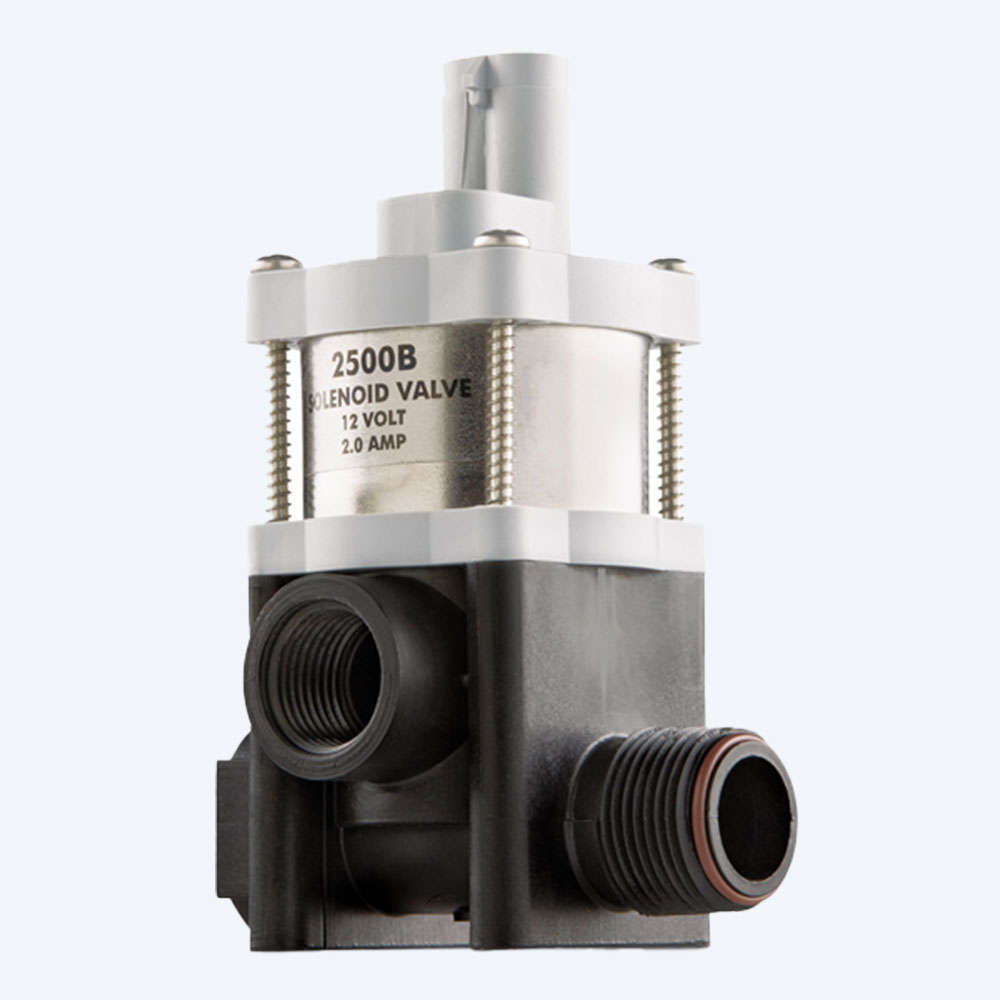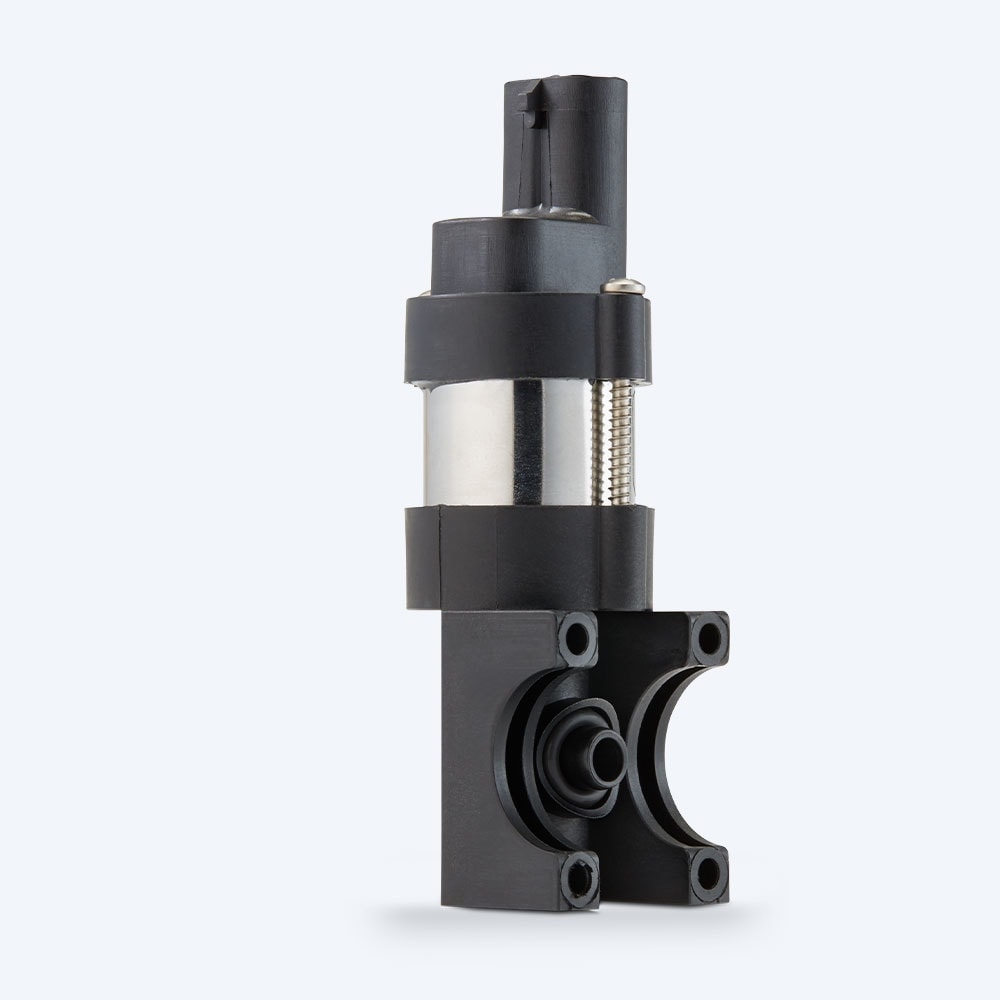Understanding Solenoid Valves
Understanding the fundamentals of solenoid valves can help you make informed decisions when it comes to improving your crop spraying systems.
Basics of Solenoid Valves
Solenoid valves convert electrical energy into mechanical energy, which then triggers a magnetic response. When an electrical current flows through the wire coil, the solenoid activates. This activation is crucial for controlling the flow of fluids in hydraulic and pneumatic systems. These valves are especially useful in agriculture for managing the precise flow of liquids in crop spraying systems. You can find more information on solenoid valves.
There are many types of solenoid valves, but two main categories stand out:
- Direct-Acting Valves: These valves operate without any external pressure and are ideal for low-flow applications.
- Pilot-Operated Valves: These valves require a minimum pressure differential to operate and are suitable for high-flow applications.
For a detailed comparison:
| Type of Valve | Operation | Ideal Use |
|---|---|---|
| Direct-Acting | Operates without external pressure | Low-flow applications |
| Pilot-Operated | Requires minimum pressure differential | High-flow applications |
Source: The Hope Group
Operating Principles
Solenoid valves function by controlling the flow of liquids or gases in a fully-open or fully-closed mode. This is particularly useful in crop spraying where precise control of liquid flow is necessary.
Here’s how they work:
- Electrical Activation: An electrical current energizes the coil.
- Magnetic Response: This current generates a magnetic field.
- Plunger Movement: The magnetic field moves a plunger within a sleeve tube.
- Orifice Opening/Closing: The plunger raises or lowers, thereby opening or closing an orifice in the valve body.
This mechanism allows or prevents the flow of fluids through the valve, making it possible to replace manual valves for remote or automated control. For more details on the functioning and applications, visit what triggers a solenoid valve.
Source: Bürkert
By understanding these basic principles, you can better appreciate how solenoid valves can enhance your crop spraying efficiency and reliability.
Types of Solenoid Valves
When selecting solenoid valves for your crop spraying needs, it’s essential to understand the different types available and their specific advantages. Two main types of solenoid valves are commonly used: direct-acting valves and pilot-operated valves.
Direct-Acting Valves
Direct-acting solenoid valves operate by directly using the magnetic force generated by the solenoid coil to open or close the valve. These valves require full power to function and can be either normally open (NO) or normally closed (NC) depending on the specific requirements of the application.
| Feature | Description |
|---|---|
| Operation | Magnetic force directly opens/closes the valve |
| Power Requirement | Full power needed |
| Configuration | Normally open (NO) or normally closed (NC) |
| Applications | Low flow capacities, low pressure differentials |
Direct-acting valves are ideal for systems with lower flow capacities or where low pressure differentials exist across the valve orifice. This makes them suitable for specific crop spraying applications where precision control is necessary (Bürkert).
Pilot-Operated Valves
Pilot-operated solenoid valves use the fluid’s pressure in the line to open the valve, allowing for the use of a smaller coil and reducing costs. These valves, however, require a certain pressure level to operate effectively.
| Feature | Description |
|---|---|
| Operation | Utilizes fluid pressure to open/close the valve |
| Power Requirement | Smaller coil, lower power |
| Configuration | Requires available pressure to function |
| Applications | High flow capacities, high pressure differentials |
In a pilot-operated valve, the plunger movement utilizes the pressure difference between the upstream and downstream fluid to open or close a larger valve area, allowing a small electrical input to control a significant or high-pressure fluid flow. This makes them ideal for crop spraying systems where higher flow capacities and pressure differentials are required.
For more information on selecting the right solenoid valve for your specific needs, check out our article on what triggers a solenoid valve?. Additionally, you can explore our comprehensive guide on solenoid valves to understand their broader applications and benefits.
Applications of Solenoid Valves
Solenoid valves are versatile devices that can be used in a variety of applications, from industrial processes to everyday automotive systems. Understanding the different uses of solenoid valves can help you choose the right one for your needs.
Industrial Usage
In industrial settings, solenoid valves are essential for controlling machines and managing the flow of liquids or gases. They are used in many applications, including:
- Beverage Factories: Solenoid valves measure the exact amount of drink to be poured into bottles and mix different liquid substances using precise volumes.
- Water Treatment Plants: These valves are crucial for removing organic pollutants from polluted water and performing various functions in water treatment processes.
- Pneumatic and Hydraulic Systems: Solenoid valves are integrated into pneumatic, motor, and hydraulic valve actuators to handle fluids that cannot be managed by solenoid valves alone.
- Commercial Applications: They are also used in autoclaves, cooling plants, watering systems, fire extinguishing systems, hygienic & sanitary equipment, water jet machinery, and other fluid control situations (Cynergy3).
| Application | Function |
|---|---|
| Beverage Factories | Measure and mix liquids |
| Water Treatment Plants | Remove pollutants |
| Pneumatic Systems | Control fluids |
| Commercial Use | Various fluid control tasks |
Automotive & Home Applications
Solenoid valves are also common in automotive systems and household applications:
- Automotive Systems: In motor vehicles, solenoid valves regulate the flow of automotive fluids such as oil, anti-skid brake fluid, and fuel. They also control the flow of fuel to the engine to reduce vehicle speed (Starter Solenoid).
- Home Applications: Solenoid valves are used in home appliances such as dishwashers and washing machines to control the flow of water. They are also found in irrigation systems to regulate water flow to different areas of the garden or farm.
| Application | Function |
|---|---|
| Motor Vehicles | Regulate automotive fluids |
| Home Appliances | Control water flow |
| Irrigation Systems | Manage water distribution |
Understanding the various applications of solenoid valves can help you make informed decisions about which type to use in your specific situation. For more information on how solenoid valves work, visit our article on what triggers a solenoid valve.
Maintenance and Selection Tips
Maintenance Guidelines
Maintaining solenoid valves is essential for ensuring optimal performance and longevity, especially in agricultural applications like crop spraying. Here are some key guidelines:
- Regular Inspection: Regularly inspect the solenoid valves for any signs of wear and tear. Pay attention to excessive noise, leakage, or sluggish operation, as these can indicate that the valve needs cleaning or repair. A proper maintenance routine ensures predictable valve operation and extends the valve’s life (Tameson).
- Cleaning: Ensure that the valve parts are clean and free of debris. Contaminants can obstruct the valve’s function and cause premature wear. Use appropriate cleaning agents that do not damage the valve material.
- Lubrication: Proper lubrication can significantly extend the lifespan of your solenoid valves. Media that provide lubrication can extend component life up to millions of cycles. Without adequate lubrication, components may wear quickly and need replacement after 100,000 cycles or less.
- Service Frequency: The frequency of servicing depends on the valve design and application. Typically, solenoid valves should be maintained every 6 to 12 months, depending on the manufacturer’s recommendations and the specific application.
Factors for Selecting Solenoid Valves
Selecting the right solenoid valve for your crop spraying needs involves considering several key factors to ensure compatibility and efficiency:
- Non-Energized State: Determine whether you need a normally open (NO) or normally closed (NC) valve. This depends on whether the valve should be open or closed when it is not energized.
- Flow Rate: The flow rate is dictated by the valve size. Ensure the valve size matches the required flow rate for your application.
- Electrical Supply: Check the electrical supply requirement for the solenoid valve, including voltage and power consumption. Typical options include 24V DC, 110V AC, and 230V AC.
- Fluid Type: Ensure chemical compatibility between the valve materials and the fluid being controlled to avoid corrosion and material degradation.
- Working Pressure Range: Verify that the valve can operate within the pressure range of your application.
- Protection Class Requirement: Consider the protection class (IP rating) to ensure the valve can withstand environmental conditions like dust and moisture.
- Temperature Requirements: Check the ambient and fluid temperature requirements to ensure the valve can operate effectively under those conditions.
- Duty Cycle: Consider the duty cycle, especially if the valve will be used frequently. Some valves are designed for continuous operation, while others are better suited for intermittent use.
| Solenoid Valve Specification | Range |
|---|---|
| Port Sizes | G3/8″, G1/2″, G3/4″, G1″, G1-1/4″, G1-1/2″, G2″ |
| Voltage Options | 24V DC (10W – 19W), 110V AC (10.5 VA – 21VA), 230V AC (9VA – 15VA) |
For more details on selecting the right solenoid valve, visit what triggers a solenoid valve?.
By following these maintenance guidelines and selection criteria, you can ensure that your solenoid valves operate efficiently and reliably, contributing to more effective and precise crop spraying.



